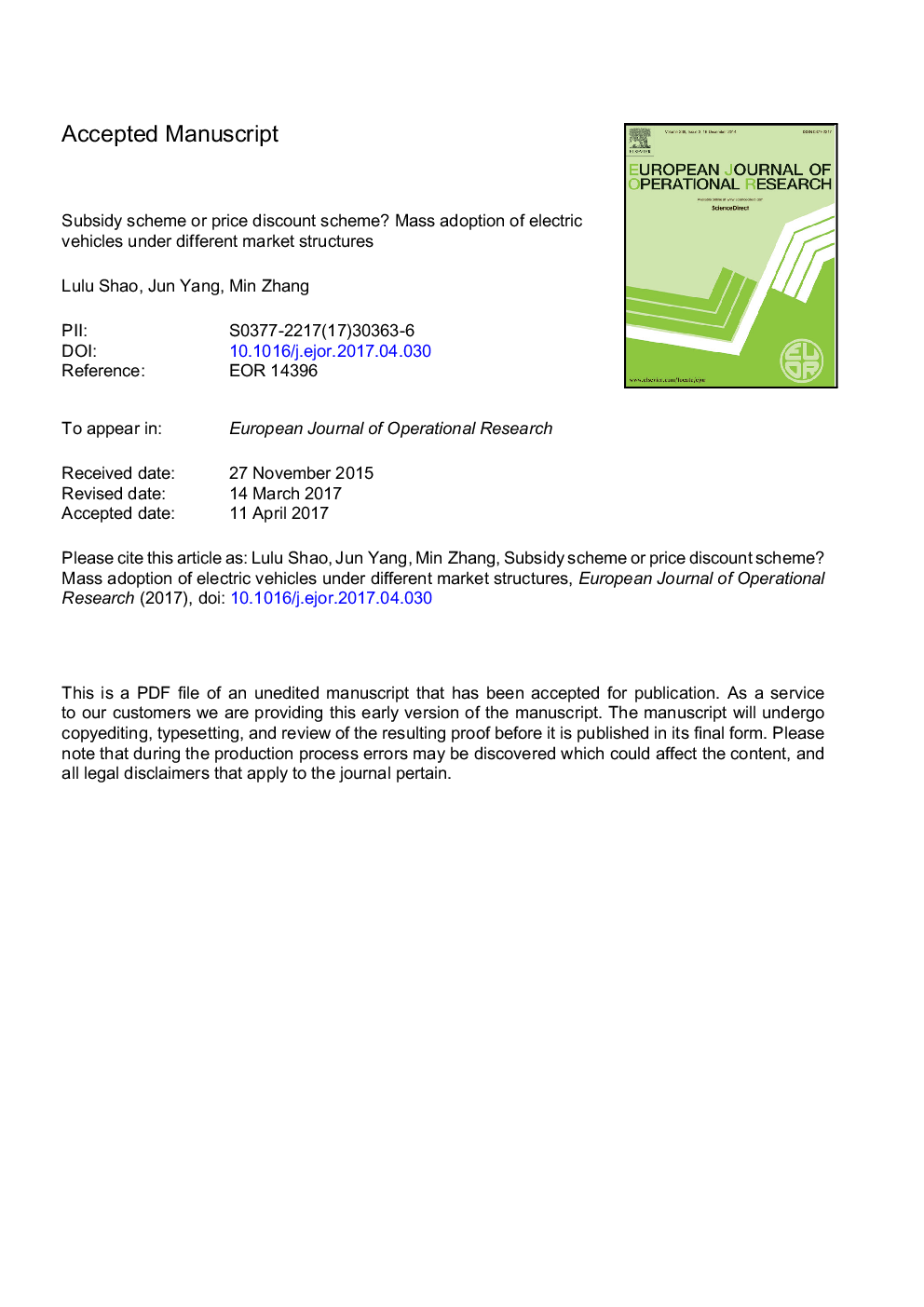| Article ID | Journal | Published Year | Pages | File Type |
|---|---|---|---|---|
| 4959595 | European Journal of Operational Research | 2017 | 38 Pages |
Abstract
This paper analyzes the electric-and-gasoline vehicle market under two different structures: monopoly and duopoly. Taking social welfare into account, the government offers a subsidy incentive scheme or a price discount incentive scheme to buyers of electric vehicles (EVs) to promote the adoption of EVs. We formulate a utility model composed of a population of consumers who make utility maximizing choices and manufacturers who set an optimal pricing that responds to the interventions of the government. Using this model, a framework for policy makers to find optimal subsidies or optimal price discount rates is developed. Unlike the monotonic relation in the monopoly setting, in the duopoly setting the relationship between consumers' low-carbon awareness and EVs' demand depends on the government's policy. Although the demand for EVs, the consumer surplus, the environmental impact, and the social welfare are identical under two incentive schemes, the government prefers to implement a subsidy incentive scheme due to the lower expenditure involved. Furthermore, under a subsidy incentive scheme, EVs' market in the monopoly setting has a smaller environmental impact than that in the duopoly setting. From the numerical tests, we show that results of social welfare comparison under two market structures depends on unit environmental impact of EV.
Related Topics
Physical Sciences and Engineering
Computer Science
Computer Science (General)
Authors
Lulu Shao, Jun Yang, Min Zhang,
